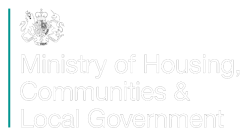Finance options for custom and self-build
Summary
This advice note outlines the finance options available to individual custom and self-builders to fund their project.
This high-level note is focussed specifically on the market in England. This an area where regional differences apply.
All house purchases
For most homeowners, a house purchase is the largest financial transaction that they will ever undertake. The financing of the house purchase is a key part of the process. Whilst there are multiple ways in which the purchase can be financed there are three key approaches:
- Using existing assets for example savings.
- Through a combination of savings and a long-term mortgage loan.
- Through a combination of savings and a long-term mortgage loan and additional finance from a third party
These approaches are equally applicable to the custom and self-build market, where all three options exist.
Important distinctions apply depending on whether a purchase is of a new build or an existing property. In the case of a new build homes then the approach will also vary depending on how the building of the home is financed. Buying a speculatively built new build house typically involves the payment of the bulk of the purchase cost to the builder when the home has been completed. Financing a custom or self-build will typically involve a range of payments to a range of providers over the course of the build. Put another way, finance for a custom or self-build home will typically cover both the building of the home and the occupation of the home after the build has been completed.
Custom and self-build mortgages
Where a custom and self-build is to be financed with a mortgage then there is typically the need to finance the land purchase and the build process, and to do so in stages. Given that the custom or self-builder needs to live somewhere whilst their home is being built, lending during this stage is on an interest only basis to minimise the outlay for the customer. The lender must also be confident that the home will be completed on budget and that they are likely to be able to get their money back should anything go wrong. This requires additional judgement as self-builds in particular may include more innovative design elements. These differences mean that mortgage lending to the custom and self-build market is typically undertaken by a more specialist firms (typically regional Building Societies). Whilst the assessment of the credit worthiness of individual will typically be undertaken directly by the mortgage lender, the lender may use a third party to help assess and ensure the quality of the lending on the planned property.
As a result of the relative complexity, the mortgage costs are likely to be higher and the maximum customer deposit needed greater than for the purchase of an existing property. That said, there is a growing and healthy supply of lenders with experience in this market.
The provision of mortgage finance is not the only area where specialist experience of custom and self-build is important. It is also important that other professionals in the chain understand the specific differences associated with custom and self-build. This includes planners, valuers, and conveyancers.
For well-planned individual homes with a suitable customer and deposit, mortgage finance is rarely an issue.
It is also important to recognise that once a custom or self-build home is completed then it essentially is treated the same way as any other existing property.
Potential complexities – where mortgage finance is possible
Certain features associated with a self- or custom build can increase the potential risk of the process to the mortgage lender. These factors are set out below.
Borrowing with a smaller deposit
- Currently mortgage lenders typically require a 20% deposit based on the expected cost of the land and build (including contingency). (However, see also “Involvement of a third party” below.)
Multiple plot sites
- Not an issue, although sites may have clauses requiring build out within a set period.
Semi-detached, terraces, apartments.
- Mortgages are available to fund the construction of a semi-detached property, typically where both self-builders are related. The lender may want to arrange both mortgages in order to have more control over the project. “Self-finish” terraced properties and apartments are becoming more common - the developer will complete the building to shell stage and the purchasers will complete the fitting out largely to their own design.
Re–development of existing buildings into apartments
- Mortgage finance is available to purchase an apartment “shell” where a developer has completed the major conversion works and the purchaser then completes the internal fit-out.
Modern Methods of Construction
- Mainstream lenders are increasingly accepting new ways of building a home – known as “Modern Methods of Construction”- including various combinations of structural construction and cladding and including offsite-manufactured systems, which can significantly speed up the build process.
The core message however is that whilst these features add complexity and may limit choice, mortgage lending can be obtained on all well-planned schemes (although the choice of lenders may be more limited).
Potential options – where mortgage finance may be a challenge
Mortgage lending is conditional on the ability of the mortgage lender to minimise any loss on its lending through taking possession of a house and selling it in the open market. It follows that the home that is built must be of interest to both the self-builder and any future buyers. Homes that may struggle to pass this test are those built of unusual materials, lacking standard features, and without typical access and access to services.
That is not to say however that such homes cannot be built using an individual’s own resources.
Involvement of a Third Party
A third party is typically involved when additional support is required in addition to a customer’s own funds and mortgage finance to enable them to purchase a property.
Help to Buy and Help to Build
Help to Buy is a Government funded Equity loan scheme. Under the scheme, the Government typically provides funding for 20% of the cost of the home in return for a 20% share in the value of a home when it is sold and interest payments on the loan (after five years).
The scheme enables individuals to borrow more money and at a lower rate. Most importantly, it allows borrowers to buy new homes with a lower deposit than would otherwise be the case, as the Government lending means the risk to the mortgage lender is reduced. Taking out a mortgage is a requirement of the scheme.
This scheme is currently an important feature of the new homes market but is it not accessible for most custom and self-build builders as it requires all payments to be made once the home has been completed.
Help to Build Equity Loan is a variation of the scheme designed specifically for custom and self-build. The scheme has been announced by the Government but the details are not yet available. It has the potential to significantly increase the number of custom and self-build homes that are purchased in England. Whilst these schemes help those to access the market who would not otherwise do so, they are not affordable home ownership schemes under the National Planning Policy Framework definition.
Affordable Home Ownership
The National Planning Policy Framework is specific that custom and self-build can be used to deliver affordable housing, including affordable home ownership
Shared ownership
Shared ownership is the most common form of affordable home ownership. Ownership is split between the homeowners and a third party (typically a housing association). The occupant purchases a share of the home (typically 25% to 75%) and rents the rest. This reduces the cost and the deposit needed and increases access.
It is possible to deliver shared ownership homes for self- and custom builders. Grant funding is available from Homes England and mortgages are available from lenders but this is currently a small market and lenders are limited. Note there are different delivery models that vary whether the build is customer led or housing association led and various ways in which the custom input is delivered (for example through the use of sweat equity).
Discounted Market Value/Restricted Resale Price/First Homes
Discounted Market Value (DMV) and other similar terms is the name applied for schemes whereby the value of a property is based not directly on its open market value. Typically, it is a set discount to the market value (typically 20% - 70%) but may be linked to another factor such as local wages. This reduces the cost of the home and the deposit needed and hence increases access. This discount is typically provided by accessing land at below open market value. This is often associated with restrictions on who can buy the home.
There are currently very few mortgage lenders in this market, and even fewer for custom and self-build. This arrangement is used in some exception site developments in rural areas. The First Homes scheme is expected to increase the size of the market and the number of lenders. It is not expected that First Homes will be used for custom and self-build.
Key points to remember
- In most cases where mortgage finance is required a custom and self-builder will need a specialist mortgage.
- There is a good supply of these mortgage for well-planned individual homes.
- Lending choice can become restricted but still available for less common and more complex builds.
- A new Help to Build scheme to be announced shortly is expected to make a significant difference to the market.
- Custom and self-build can be a route to affordable home ownership and mortgage products are available, but choice is currently restricted as the current markets are small.
The Role of the Right to Build Task Force
The provision of finance for custom and self-build projects is a specialist area where the Task Force does not currently offer specialist advice and support.
Note:
This note has been prepared for the Right to Build Task Force by Buildstore Mortgage Services Ltd – www.buildstore.co.uk. Buildstore Mortgage Services Ltd is a specialist mortgage brokerage with a range of tailored mortgages for self and custom build, renovations, conversions and knock down and rebuilds. Other providers are available.


